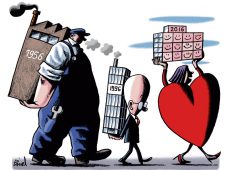

A good manager should be a good leader.
Over the years, an immense business has emerged around connecting the role of management with leadership. Many workshops, training, and specialized books propose a lot of different methodologies; this results in having to choose the right methodology or to take the best practices from different approaches. These methodologies, however, cannot consider all of an individual's values, beliefs, and experience.
So what is the main difference between a manager and a leader?
A manager is someone who has been selected by hierarchy and imposed upon a team.
Their job is to organize, coordinate and control the activities of a person, a team or an organization.
A leader is someone who gets their authority from the members of the group.
Leadership is the ability to get other individuals or organizations to follow them. Whoever you are - a manager, a parent, a coach, a politician - and when taking a front position, a leader has to provide a guiding role including motivating, evaluating and developing.
Leaders do not necessarily have to have an official managerial function.
Over the centuries, the imposed hierarchy secured financial, economic and political results. The industrial revolution was followed by the technological revolution at the end of the 20th century. Labour had to produce more and more, and it took strong minds and big ideas to organize and optimize production more efficiently.
Is there, however, an existing alternative for the future to the traditional hierarchy model? One that will allow employees to feel free, to be responsible and creative? One that will rely on self-determination and self-organization, and increase self-motivation and creating values amongst in a team?
A recent approach, called “liberated" or “freedom-form” (F-Form) company” is emerging in the U.S.A. and Europe.
It is based on a new business philosophy: working together under full transparency around a common and clear mission and trusting each other.
The priority of these companies is to recover a certain sense of action. For example:
Many individuals do not want to wear the “manager” suit, but they are willing to work to get more trust, responsibilities, more engagement, recognition and why not, a higher salary.
In a constantly changing business environment, we need to review how we work by putting people at the heart of work. Employees should be allowed to “be” and to “do”, contributing to the success of a common mission while their own needs and wishes are respected, and being allowed to share feelings and emotions through a modern and “liberated” model that requires an open-minded spirit and courageous experimentation to succeed.
Photo :
TED: L’humain au cœur de l’entreprise
Sources :
http://tedxvaugirardroad.com/lhumain-au-coeur-de-lentreprise/
https://en.wikipedia.org/wiki/Liberated_company
https://forum-management-montreux.ch/management/les-5-dimensions-essentielles-du-leadership/